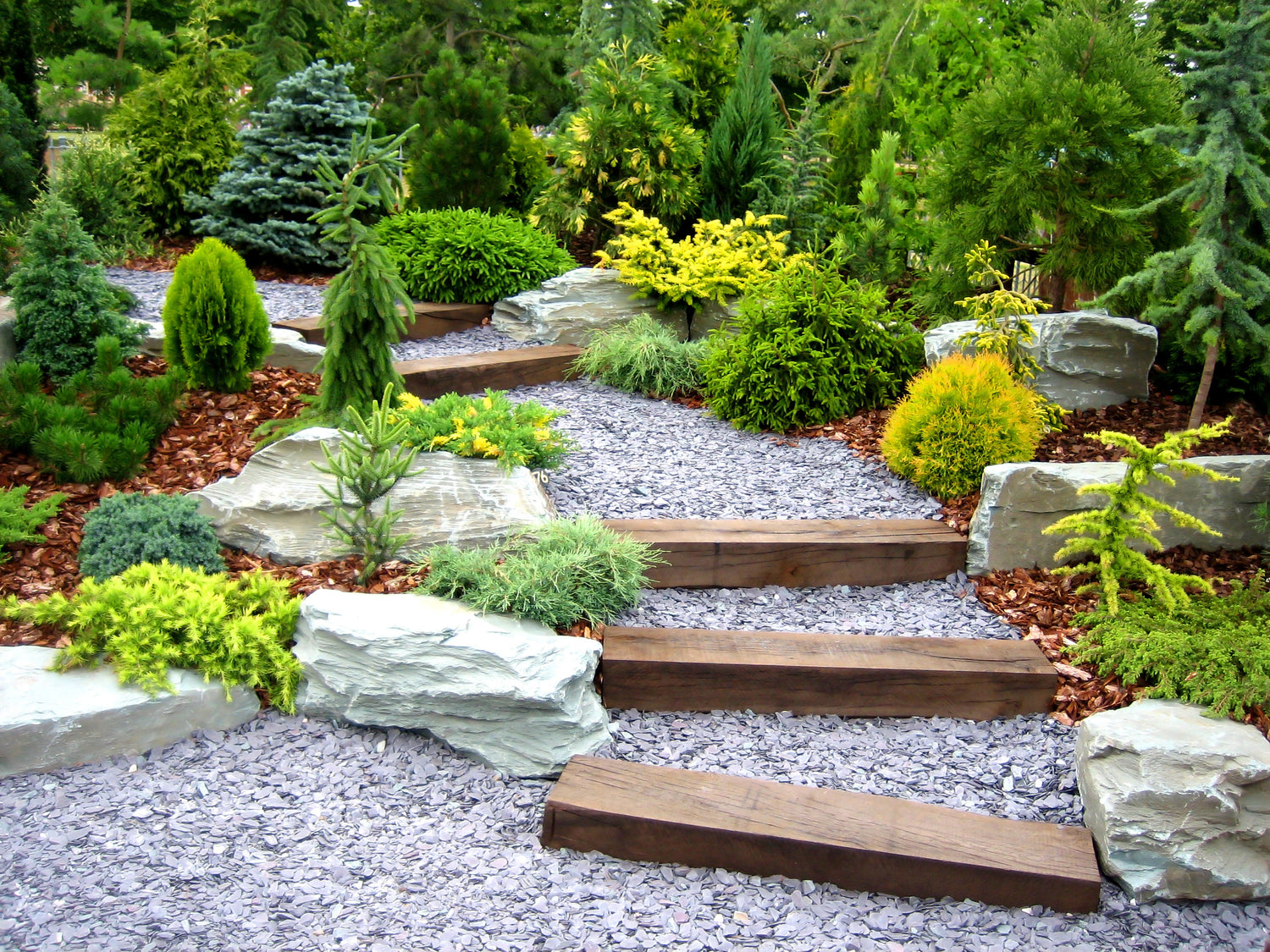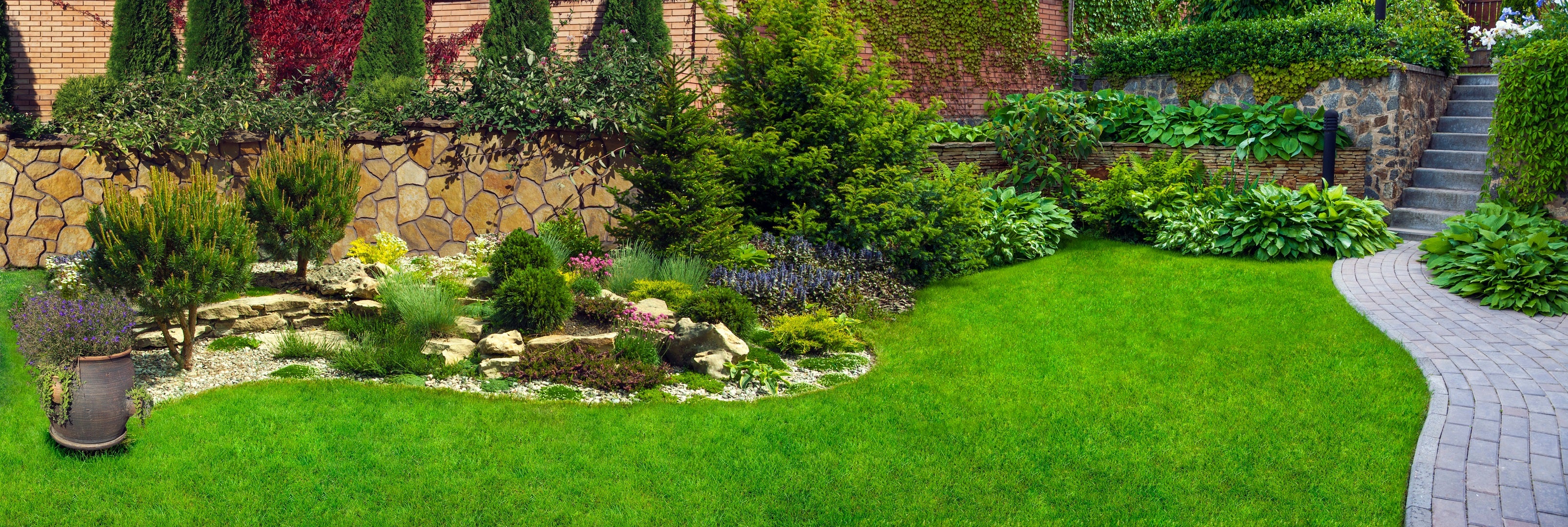Check Out Innovative Techniques to Enhance Your Building's Aesthetic Via Landscape design
Exploring ingenious landscape design strategies can transform a residential property's aesthetic and performance. By incorporating indigenous plants and hardscaping, home owners can develop sustainable and organized settings. Furthermore, the thoughtful usage of shade theory and water functions enhances aesthetic appeal. As exterior areas end up being extensions of the home, recognizing exactly how to combine these components efficiently is vital. This conversation will certainly discover approaches that boost both charm and functionality in outdoor settings.
Accept Native Plants for Sustainability
As environment change and city development continue to impact local communities, embracing indigenous plants for sustainability has actually become increasingly essential. Indigenous plants are well-adapted to regional environments, soil kinds, and wildlife, needing much less water and less chemical inputs contrasted to non-native types. Their growth sustains neighborhood biodiversity, fostering habitats for pollinators, birds, and various other wild animals. By including native flora into landscapes, homeowner can develop lively, lasting atmospheres that show the area's all-natural beauty.Furthermore, indigenous plants boost soil wellness by advertising useful microbes and decreasing erosion. They likewise add to carbon sequestration, aiding reduce environment modification impacts. The aesthetic appeal of native gardens can be equally as captivating as standard decorative styles, showcasing seasonal flowers and differed textures. Inevitably, welcoming native plants not only sustains eco-friendly equilibrium but additionally enriches the community's aesthetic landscape, urging a much deeper link to the natural globe.
Integrate Hardscaping for Structure and Function
Hardscaping plays an important duty in enhancing both the structure and functionality of outdoor spaces - Landscaping St. Louis Missouri. By selecting durable materials and strategically preparing the layout, property owners can produce functional settings that match their landscape design. The combination of hardscape aspects not just includes visual rate of interest yet additionally offers sensible functions, such as enhancing accessibility and managing water drain
Benefits of Hardscaping
While lots of property owners concentrate primarily on softscaping aspects, integrating hardscaping into a landscape layout provides many advantages that improve both structure and feature. Hardscaping, which consists of features such as patios, walkways, and maintaining walls, provides a strong foundation for outside areas. It produces defined areas that improve activity and functionality, encouraging outdoor tasks and celebrations. Additionally, hardscaping can help handle water drainage, decreasing disintegration and advertising much healthier plant. These functions add aesthetic allure, contributing to the overall style harmony of a building. By balancing softscaping with hardscaping, homeowners can produce visually striking landscapes that are not only lovely but also useful and lasting for years to find.
Materials for Durable Style
Incorporating hardscaping not just improves the visual charm of outdoor areas yet also depends heavily on the selection of products that assure longevity and functionality. High-grade concrete, natural stone, and brick are prominent alternatives for sidewalks, patios, and walls, giving a robust foundation that withstands weather elements and heavy foot web traffic. Composite materials use the appearance of timber without the upkeep, making them ideal for decking and fencing. Additionally, permeable pavers enable for efficient drain, promoting environmental sustainability while maintaining structural integrity. Metal accents such as railings and sculptures can introduce contemporary style and durability. By choosing the right materials, homeowner can develop aesthetically striking landscapes that stand the test of time and improve their outside living experience.

Planning Useful Outdoor Spaces
Exactly how can one effectively prepare outdoor rooms that balance aesthetics with capability? Integrating hardscaping elements is essential in accomplishing this balance. Features such as patio areas, walkways, and maintaining walls not just provide structure yet also improve the aesthetic appeal of the landscape. By tactically placing these elements, one can produce defined locations for tasks like enjoyable, gardening, or relaxation.Moreover, picking products that match the natural environments can boost the general aesthetic. Using natural rock or attractive pavers can integrate effortlessly with plant. Additionally, hardscaping can help in drain and dirt stabilization, making sure a lasting outside environment. Eventually, thoughtful planning that integrates hardscaping with landscape style leads to welcoming, functional exterior spaces that accommodate different requirements.
Develop Multi-Functional Spaces for Outdoor Living
Developing multi-functional areas for exterior living boosts the use and enjoyment of a landscape. By incorporating exterior dining areas and leisure zones, property owners can optimize their outside experience. These attentively created rooms advertise social interaction while providing serene environments for unwinding.

Exterior Dining Areas
While numerous house owners look for to enhance their exterior rooms, transforming a backyard right into a functional eating location can elevate both looks and functionality. Exterior dining locations provide a welcoming environment for events, permitting families and pals to appreciate dishes in a natural setting. Including stylish furnishings, such as weather-resistant eating tables and chairs, develops a comfortable experience. Adding features like pergolas or shade sails can provide security from the components while giving visual rate of interest - go to these guys Landscaping St. Louis MO. Decorative elements, such as string lights or lanterns, can enhance ambiance throughout night dishes. Furthermore, incorporating close-by planters or garden beds includes plant, developing a natural appearance. Ultimately, a properly designed exterior eating space fosters connection and pleasure, enhancing the general outdoor living experience
Relaxation Areas
Relaxation zones work as essential elements of exterior living, offering a tranquil retreat where individuals can relax and charge. These areas can be creatively designed to incorporate different elements that improve convenience and tranquility. Incorporating features such as hammocks, easy chair, or exterior couches welcomes find out here now relaxation while adding aesthetic charm. Soft lights alternatives, like string lights or lights, can produce a relaxing environment for night events. Furthermore, integrating natural environments such as water attributes, plants, and landscaping can even more improve the ambiance. By mixing performance with charm, relaxation zones become versatile areas for meditation, reading, or delighting in peaceful moments with nature, eventually transforming exterior areas into inviting retreats that accommodate both other leisure and social interaction.
Usage Color Concept to Design Vibrant Landscapes
Shade theory plays an essential duty in creating dynamic landscapes, as it influences the emotional and psychological responses of viewers. By comprehending just how colors interact, landscape developers can create unified atmospheres that stimulate certain sensations. For example, cozy hues such as reds and oranges can stimulate a room, making it really feel lively and welcoming, while cooler tones like blues and eco-friendlies promote tranquility and relaxation.Incorporating contrasting shades can also improve aesthetic passion. Developers commonly use corresponding shade schemes-- shades opposite each other on the color wheel-- to develop striking prime focus. Furthermore, using seasonal plants enables for a dynamic shade palette that alters throughout the year, keeping visual appeal.Moreover, the calculated positioning of colors can direct the visitor's eye with the landscape, creating a sense of circulation and unity. Inevitably, a thoughtful application of shade theory raises a landscape, improving its aesthetic and psychological impact.

Implement Water Attributes for Peace and Allure
Incorporating water features into landscape layout can markedly enhance both peace and visual allure. These elements, such as fish ponds, fountains, or waterfalls, present relaxing audios and bewitching visuals that draw attention and develop a tranquil environment. The gentle circulation of water can mask unwanted noise, offering a calm resort from the outdoors world.Moreover, water features draw in wild animals, such as birds and butterflies, enhancing the ecosystem and including dynamic life to the landscape. Strategically positioned, they can serve as prime focus, directing the visitor's eye and enhancing the general structure of the exterior space.In addition to aesthetic advantages, water attributes can also enhance the microclimate, offering cooling impacts throughout warm weather. When created thoughtfully, these installments harmonize with bordering plants and hardscapes, creating a natural and inviting atmosphere. Ultimately, water functions are a versatile device in landscape design, promoting charm and tranquility.
Experiment With Upright Horticulture Techniques
How can vertical horticulture transform restricted rooms right into lavish, green resorts? This cutting-edge method makes use of wall surfaces, fencings, and trellises to create a lively tapestry of plant, also in confined areas. By maximizing vertical area, property owners can grow a range of plants, from natural herbs and veggies to decorative blossoms, boosting both visual allure and functionality.Vertical yards not only supply a stunning visual influence yet also enhance air high quality and advertise biodiversity. They can be customized to match numerous layout styles, from modern-day minimal to rustic appeal. Additionally, incorporating modular planters permits for easy rearrangement and seasonal updates, ensuring the garden stays vibrant throughout the year.Choosing the right plants is crucial; picking those that grow in upright configurations will certainly generate the very best outcomes. On the whole, trying out with upright horticulture methods can effectively redefine exterior spaces, turning them into green sanctuaries that invite relaxation and satisfaction.
Utilize Illumination to Improve Setting and Safety And Security
While reliable landscape design can transform outdoor rooms, the critical use illumination plays an important function in improving both setting and safety. Attentively put outside lighting can highlight building functions, garden paths, and special plants, producing a welcoming ambience. Soft illumination from lights or string lights can stimulate a comfortable setting for evening events, while highlighting can emphasize focal factors such as sculptures or water features.In addition to visual improvements, lighting substantially adds to safety and security. Well-lit sidewalks and access factors reduce the danger of accidents, making navigating simpler after dark. Motion-sensor lights supply an added layer of protection by enlightening areas when movement is spotted. By integrating various lighting methods, homeowners can attain a harmonious balance in between appeal and functionality, guaranteeing that their outside areas continue to be both aesthetically attractive and safe and secure. On the whole, efficient exterior illumination is an essential part of comprehensive landscape layout.
Frequently Asked Concerns
Just How Can I Pick the Right Plants for My Environment?
Choosing the right plants for a details environment entails looking into neighborhood weather patterns, soil problems, and indigenous species. Consulting horticulture sources and neighborhood specialists can give beneficial understandings right into proper plant choices for optimal growth and sustainability.
What Are the Maintenance Requirements for Various Landscape Design Functions?
The upkeep requirements for landscape design attributes differ commonly. Some plants need regular trimming and watering, while hardscapes demand occasional cleaning and repair services. Recognizing specific demands guarantees long life and optimal look of each attribute in the landscape.
Just how Do I Spending plan for a Landscape Design Job?
Budgeting for a landscape design task calls for assessing prices for materials, labor, and style. landscaping st louis. One should focus on demands versus desires, look for several quotes, and allocate a contingency fund for unexpected expenses to assure financial expediency
Can I Landscape My Residential or commercial property Myself, or Should I Employ a Specialist?
The individual contemplated whether to embark on the landscape design job separately or enlist a specialist. Considering personal skills against possible expertise, they identified that each alternative lugged distinct benefits and difficulties, influencing their decision considerably.
What Are the most effective Times of Year for Landscaping Projects?
The most effective times for landscape design tasks usually include very early spring and early loss. These seasons use desirable climate conditions, allowing plants to establish origins prior to extreme temperature levels, making sure a successful and dynamic landscape makeover.